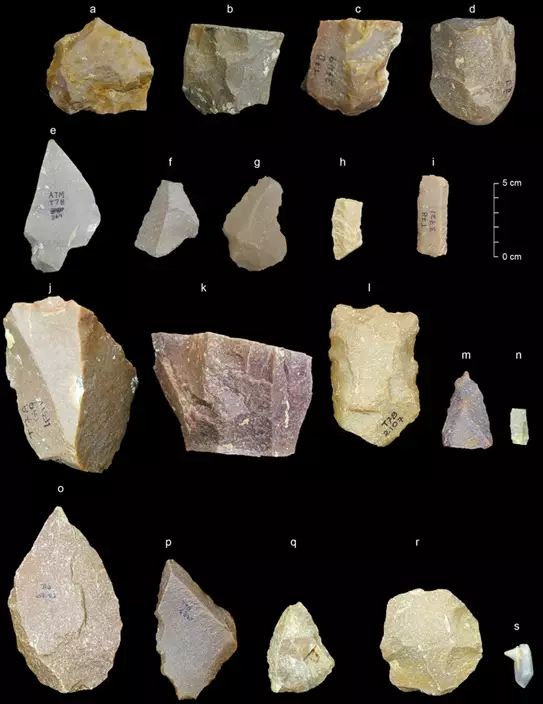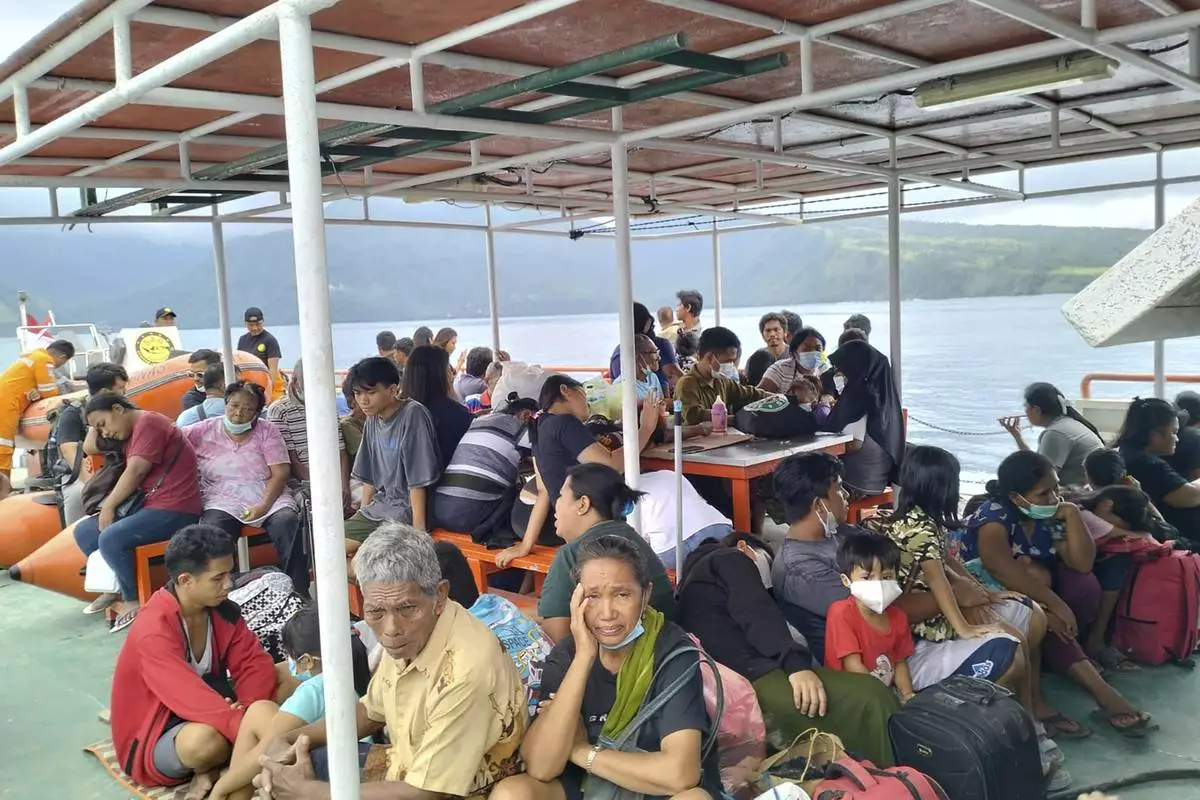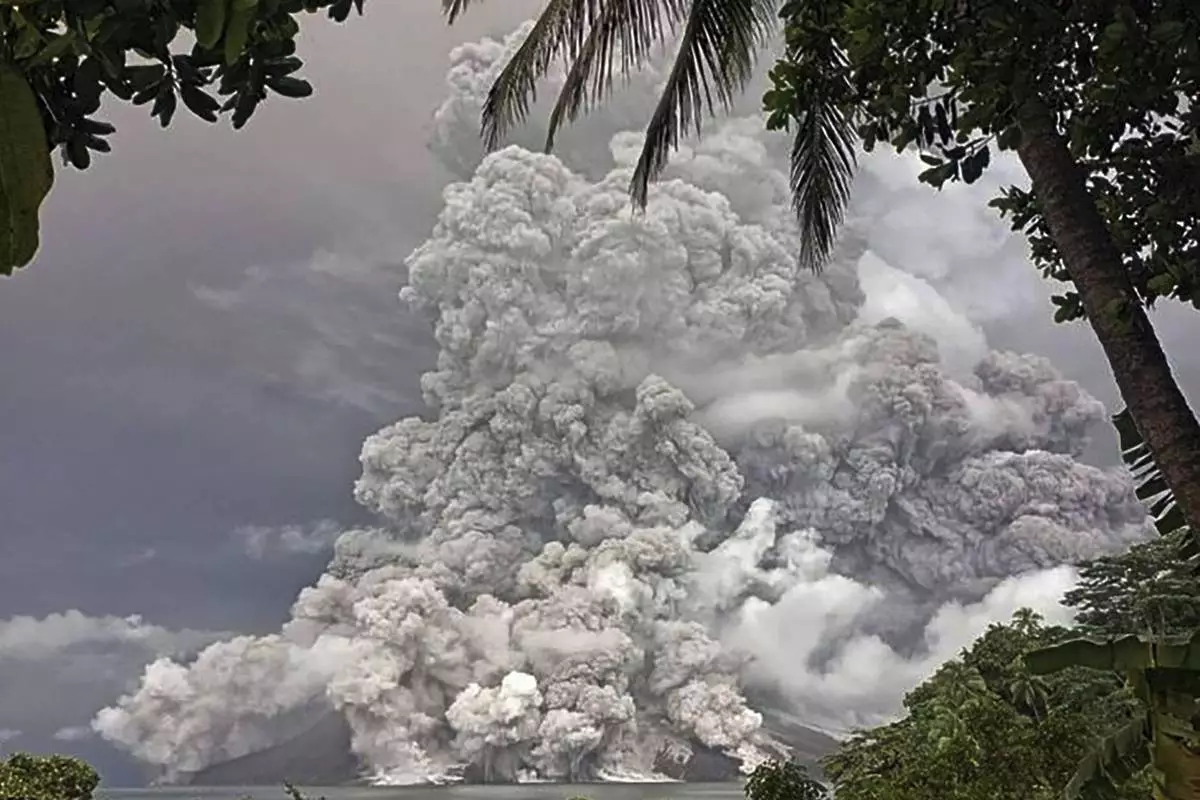Just a week after scientists reported evidence that our species left Africa earlier than we thought, another discovery is suggesting the date might be pushed back further.

This image provided by the Sharma Centre for Heritage Education, India in January 2018 shows a sample of artifacts from the Middle Palaeolithic era found at the Attirampakkam archaeological site in southern India. (Kumar Akhilesh, Shanti Pappu/Sharma Centre for Heritage Education, India via AP)
Homo sapiens arose in Africa at least 300,000 years ago and left to colonize the globe. Scientists think there were several dispersals from Africa, not all equally successful. Last week's report of a human jaw showed some members of our species had reached Israel by 177,000 to 194,000 years ago.
Now comes a discovery in India of stone tools, showing a style that has been associated elsewhere with our species. They were fashioned from 385,000 years ago to 172,000 years ago, showing evidence of continuity and development over that time. That starting point is a lot earlier than scientists generally think Homo sapiens left Africa.
This tool style has also been attributed to Neanderthals and possibly other species. So it's impossible to say whether the tools were made by Homo sapiens or some evolutionary cousin, say researchers who reported the finding Wednesday in the journal Nature .
"We are very cautious on this point" because no human fossils were found with the tools, several authors added in a statement.
It's not clear how much the tool development reflects arrival of populations or ideas from outside India, versus being more of a local development, said one author, Shanti Pappu of the Sharma Centre for Heritage Education in Chennai, India.
The tool-making style was a change from older stone tools found at the site, featuring a shift to smaller flakes, for example.
Michael Petraglia, an archaeologist who specializes in human evolution in Asia but didn't participate in the work, said he did not think the tools show that our species had left Africa so long ago.
"I simply don't buy it," said Petraglia of the Max Planck Institute for the Science of Human History in Jena, Germany.
Instead, he said, he believes one of our evolutionary cousins in India developed the tool style independently of outside influence. The tools at the site northwest of Chennai in southeastern India are closely related to the older tool-making style there and seem to represent a transition, he said.
The idea that they reflect knowledge brought in from elsewhere would be tough to prove in India, he said. The country has few well-studied archaeological sites and only one fossil find from this period, from a forerunner of Homo sapiens that was associated with the earlier style of tool-making, Petraglia said.
MANADO, Indonesia (AP) — Indonesia's Mount Ruang volcano spewed more hot clouds on Wednesday after an eruption the previous day forced the closure of schools and airports, pelted villages with volcanic debris and prompted hundreds of people to flee.
Seven airports, including Sam Ratulangi international airport in Manado, the capital of North Sulawesi province, remained closed after Tuesday's eruption, the second in two weeks. Schools were shut to protect children from volcanic ash.
The volcano is on tiny Ruang Island, part of the Sitaro islands chain.
The Indonesian geological agency urged people to stay at least 7 kilometers (4 miles) from the volcano’s crater. It warned people on nearby Tagulandang Island, the closest to the volcano, of possible super-heated volcanic clouds from a further eruption and a tsunami if the mountain's volcanic dome collapses into the sea.
Video released by the National Search and Rescue Agency showed about a hundred villagers from Tagulandang Island being evacuated on a navy ship. Hundreds of others were waiting at a local port to be evacuated.
Agency spokesperson Abdul Muhari said 11,000 to 12,000 people living within a 7-kilometer danger zone would be taken to government shelters.
Tuesday’s eruption darkened the sky and peppered several villages with ash, grit and rocks. No casualties were reported.
After Mount Ruang's April 17 eruption, authorities warned that a subsequent eruption might collapse part of the volcano into the sea.
Ruang is among about 130 active volcanoes in Indonesia. The archipelagic nation is prone to volcanic eruptions and earthquakes because of its location on the Pacific “Ring of Fire,” a series of fault lines stretching from the western coast of the Americas through Japan and Southeast Asia.

In this photo released by the Vulcanology and Geological Disaster Mitigation Center (PVMBG) of the Indonesian Ministry of Energy and Mineral Resources, Mount Ruang releases volcanic materials during its eruption on Wednesday, May 1, 2024, on Sulawesi Island, Indonesia. Indonesia's Mount Ruang volcano erupted Tuesday for a second time in two weeks, spewing ash almost 2 kilometers (more than a mile) into the sky, closing an airport and peppering nearby villages with debris. (PVMBG via AP Photo)

In this photo provided by the Indonesian National Search and Rescue Agency (BASARNAS), residents of Tagulandang island sit on a ship of National Search and Rescue Agency to evacuate after Mount Ruang releases volcanic materials in Sulawesi island, Indonesia, Wednesday, May 1, 2024. Indonesia's Mount Ruang volcano erupted Tuesday for a second time in two weeks, spewing ash almost 2 kilometers (more than a mile) into the sky, closing an airport and peppering nearby villages with debris.(Indonesian National Search and Rescue Agency via AP)

In this photo released by the Vulcanology and Geological Disaster Mitigation Center (PVMBG) of the Indonesian Ministry of Energy and Mineral Resources, Mount Ruang releases volcanic materials during its eruption, Tuesday, April 30, 2024, on Sulawesi Island, Indonesia. Indonesia's Mount Ruang volcano erupted Tuesday for a second time in two weeks, spewing ash almost 2 kilometers (more than a mile) into the sky, closing an airport and peppering nearby villages with debris. (PVMBG via AP Photo)

Mount Ruang volcano is seen during the eruption from Tagulandang island, Indonesia, Wednesday, Wednesday, May 1, 2024. Indonesia's Mount Ruang volcano erupted Tuesday for a second time in two weeks, spewing ash almost 2 kilometers (more than a mile) into the sky, closing an airport and peppering nearby villages with debris.(AP Photo/ Hendra Ambalao)














